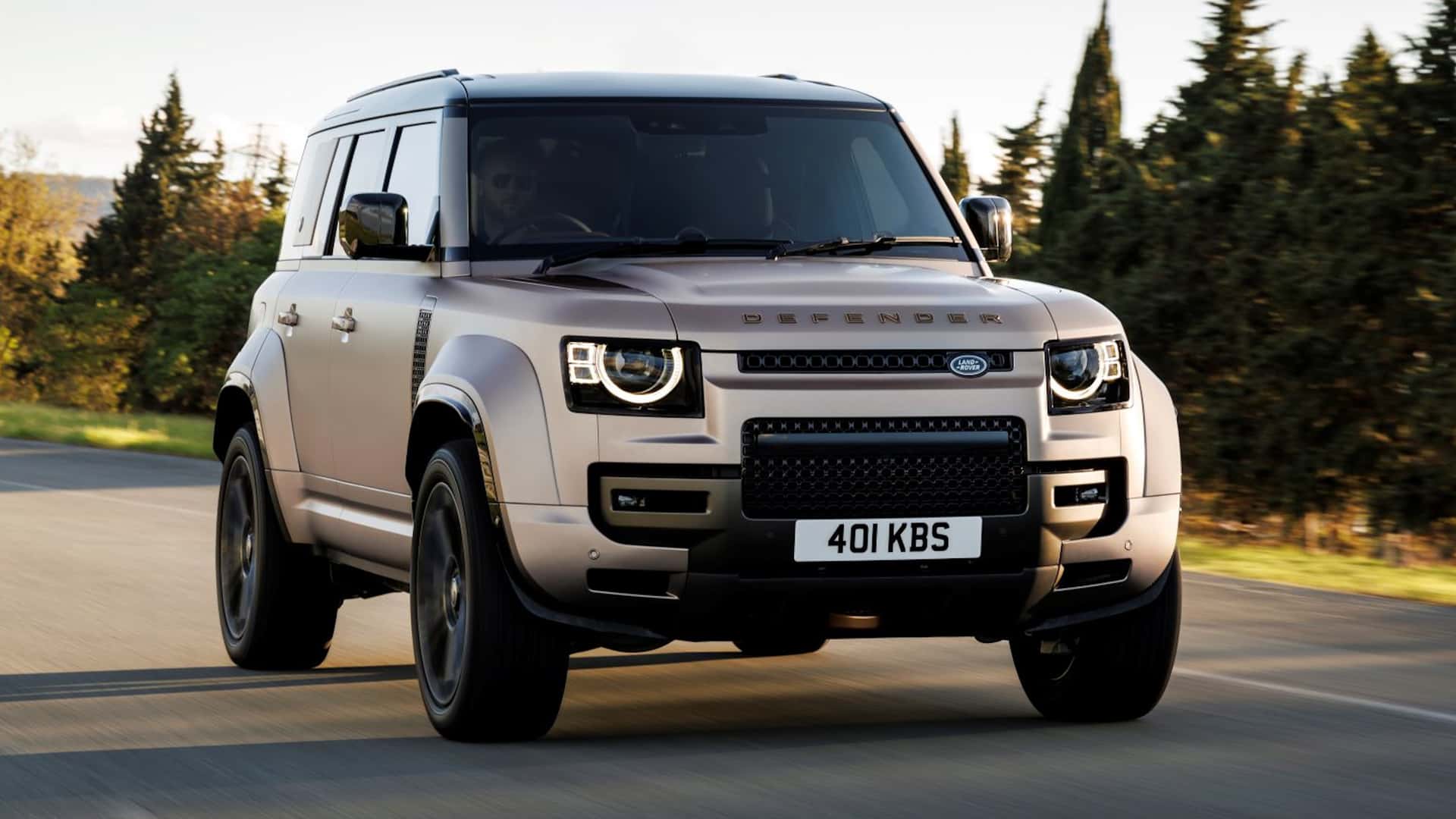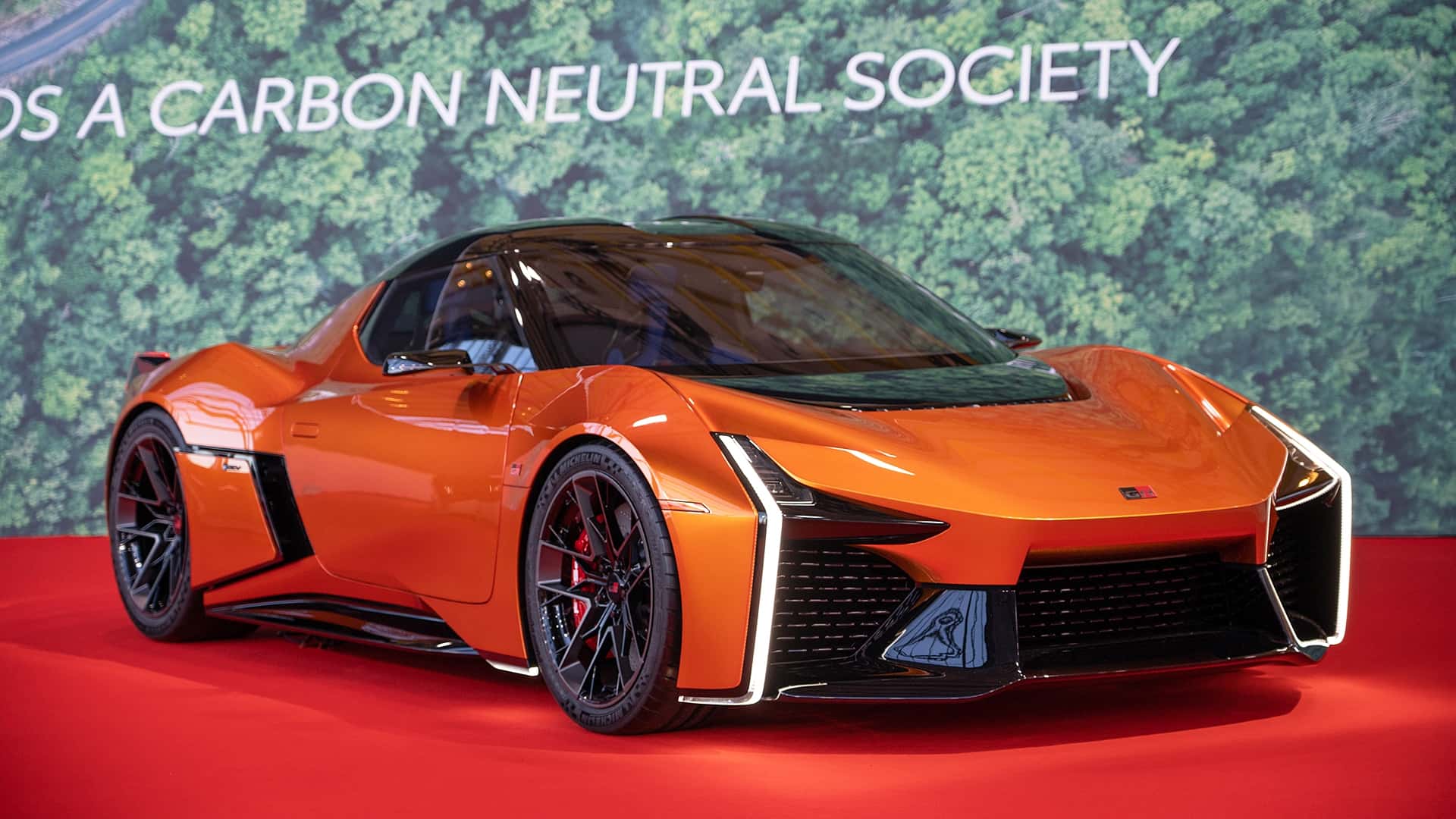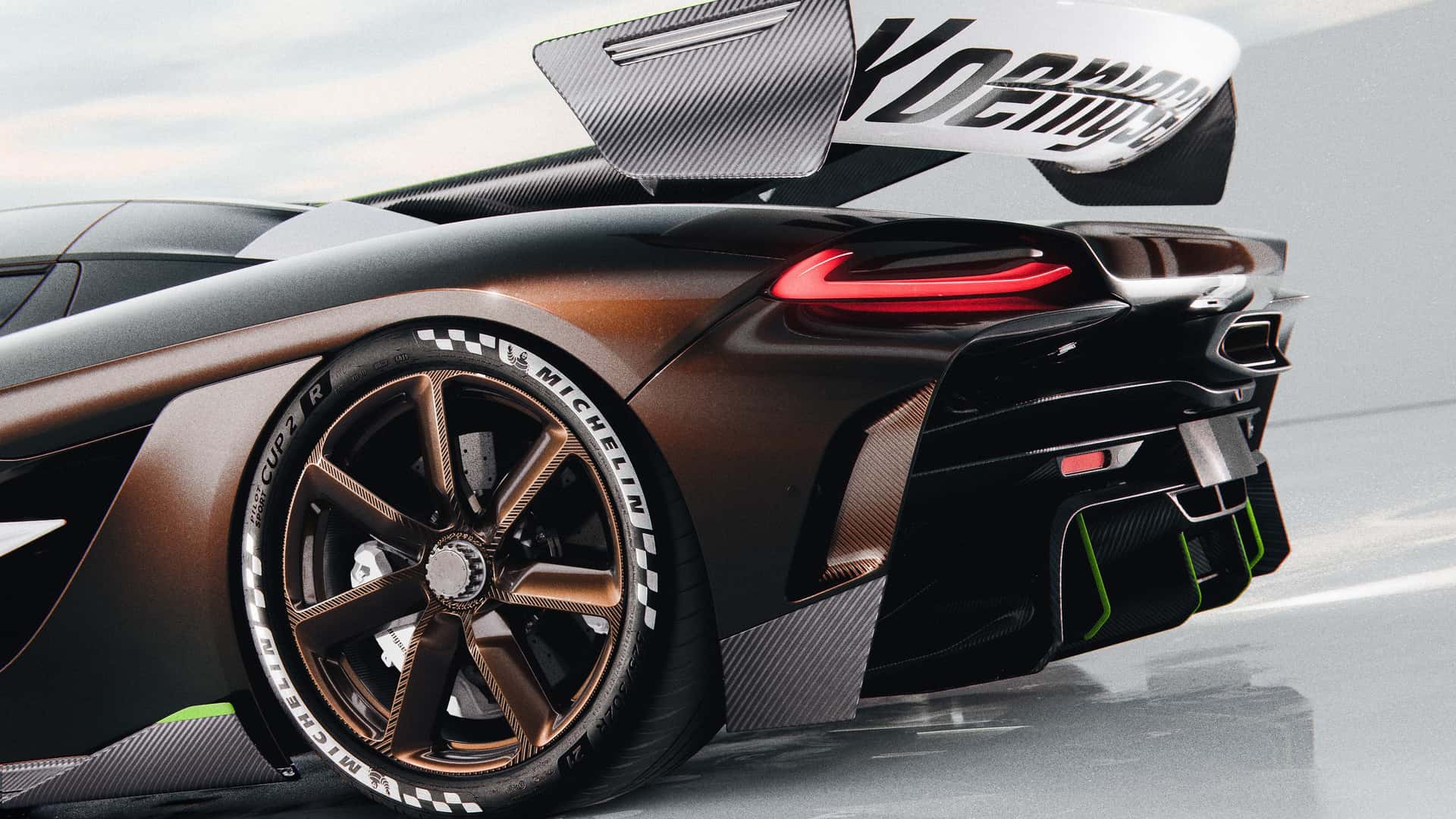The Jaguar Sports Car Concept That Took 15 Years To Reach Production
Quick Links
-
- The XK180 Wasn't Only Treated To A Shorter Chassis
-
- The F-Type Would Eventually Enter Production Over A Decade Later
Jaguar was one of the premier British sports brands during the 20th century, having offered some truly world-beating vehicles. These included the XK120, which was the fastest car in the world when it debuted in 1948, as well as the advanced Mark 2 sedan, which was so rapid that it became the preferred method of transport for both cops and robbers. It also took the fight to its rivals on the racetrack, with models like the D-Type running at the front in storied events like the 24 Hours of Le Mans.
In the late 1990s, Jaguar decided to build a special concept car that made use of its extensive DNA.

New Jaguar Logo 2024
Jaguar
Jaguar is a premium car manufacturer from the UK, currently owned by the broader Jaguar Land Rover (JLR) group. Originally a producer of motorcycle sidecars from 1922 (under the name Swallow Sidecar Company), the manufacturer later moved to the production of passenger car bodies under the ownership of SS Cars from 1935. In 1945, SS Cars was renamed to Jaguar Cars. The manufacturer has a historic back catalog of vehicles, notably the XK, E-Type, and XJ220, with modern hits including the F-Type and F-Pace. Jaguar has pledged to become an all-electric automaker starting in 2025, with production of all combustion cars ceasing early in 2024. The brand has launched an all-new identity for its future as an electric luxury automaker.
The Jaguar XK180 concept car is the main focus of this article, and how it was inspired by XK models that had gone before. All technical data was sourced from trusted providers such as the vehicle manufacturer.
Built To Celebrate The 50th Anniversary Of The XK Line
| 1998 Jaguar XK180 Specifications | |
|---|---|
| Engine | Supercharged 4.0-liter V8 |
| Power | 450 hp |
| Torque | 445 lb-ft |
| 0-60 mph | 4.5 seconds |
| Top Speed | 180 mph |
Manufacturers love to hark back to their early heritage when selling new cars, or perhaps when designing one-off concepts that are made to capture the public's imagination and endear them to the brand. Jaguar has built its fair share of concept cars that feature design cues borrowed from some of its earlier models, with the 1998 XK180 being a key example of this. Wanting to show what its contemporary designers were capable of, Jaguar tasked them to build a car that was not only cutting edge, but featured aspects of some of its most legendary creations.
Considering the 50th anniversary of the first XK model, the 1948 XK120, was coming up, there was no better time to embark on the quest. Jaguar made it clear from the outset that it would not be offering the car for sale to the public, with the first prototype debuting at the 1997 Paris Motor Show. An evolution of the car emerged in 1998, with Jaguar electing to make some design changes.
The XK180 was built in secret by Jaguar's Special Vehicle Operations team (SVO) at its workshop in the United Kingdom, and was way more than a simple re-skin.
An XKR Coupe Was Used As A Base For The XK180
Rather than start the project from scratch, Jaguar's SVO crew began with a normal production XKR. They stripped the vehicle down to just its chassis, before shortening it by a full five inches. This was done to not only give the XK180 more of a compact look, but also to make it more agile and responsive. With the chassis now sorted, SVO turned its attention to extracting more grunt from the XKRs supercharged 4.0-liter V8.
Following some extensive modifications, the V8 was able to output a commanding 450 hp, an 80 hp improvement over the stock powerplant. Interestingly, Jaguar opted to equip the XK180 with a five-speed semi-automatic gearbox rather than a more engaging H-pattern manual unit, the controls of which were mounted on the steering wheel. The gearbox could be left in its standard auto mode, or the wheel controls could be used to shift gears manually.

google news icon large
The XK180 Wasn't Only Treated To A Shorter Chassis
Rather than expect the XK180 to deal with the same running gear as the XKR, SVO also went to town to make it more hardcore. Jaguar's Computer Active Technology Suspension setup, an electronically-adjusted damper system, was retained from the XKR, though its settings were revised for use on the shorter XK180. The springs and anti-roll bars were also stiffened up to help reduce body roll and improve its responsiveness.
A powerful Brembo braking system was also utilized on the XK180, with four-piston calipers and ventilated rotors designed to allow the car to slow down for corner entries repeatedly without any brake fade. A set of low-profile Pirelli tires also came along for the ride, further emphasizing that the XK180 wasn't simply designed to win a beauty contest. The final article was fully drivable, and was tested by a range of journalists when it broke cover in 1998.
The XK180's Exterior Took Inspiration From Its Sporty Ancestors
In order to help keep weight to a minimum, the decision was taken to craft the XK180s body from aluminum. Despite being built to celebrate the history of the XK model line, the XK180 took most of its design influence from models like the D-Type and the immensely valuable E-Type. The XK180s overall profile was quintessential Jaguar, with its curvaceous lines flowing around the entirety of the vehicle.
It also came with a wrap-around windshield, a design that was influenced by the D-Types component. It also got Jaguar's traditional circular headlights and ovular grille, while its hood slats were modified versions of those featured on the D-Type. The whole point of the XK180s design was to take the design cues from these earlier models, and bring them into the modern age.
The sleek body was also finished in a special green color, which was influenced by the old British Racing Green tone that Jaguar models frequently ran decades earlier. The entire project was completed in just ten months, an impressive timeframe given how much development went into building it.
The XK180s Legacy Lived On In A Concept That Led To A Future Production Model
| 2000 Jaguar F-Type Concept Specifications | |
|---|---|
| Engine | Supercharged 3.0-liter V6 |
| Power | 300 hp |
| Torque | N/A |
| 0-60 mph | N/A |
While the XK180 never made production, a later Jaguar concept would eventually make it into public hands. In 2000, Jaguar unveiled the F-Type concept. The car was smaller than its XK8, and was pitched at the cheaper end of the sports car market. The concept also featured several similar design touches to the XK180, such as the wraparound windshield and curvaceous outline that tapered to a point at the rear.
The F-Type Would Eventually Enter Production Over A Decade Later
Despite the F-Type concept being well-received upon its debut at the 2000 North American International Auto Show, Jaguar decided to focus on developing luxury sedans such as the S-Type at the behest of owners Ford in the early 2000s. It finally got its way though, and in 2013 the Jaguar F-Type was released to the public. The production version looked significantly different from the concept, but more than a decade had passed.
It also came with a range of powerplants, with the base turbocharged inline-four joined by supercharged V6 and V8 options. Much like the F-Type concept built over a decade earlier, the production car was built to go up against the likes of the Porsche Boxster and the BMW Z4. It enjoyed a pretty long run too, with the model finally discontinued in 2024 as Jaguar looks toward an EV-focused future.
It may have taken a while after the XK180 to get a fully-fledged Jaguar compact sports car, but it got there in the end.


















































